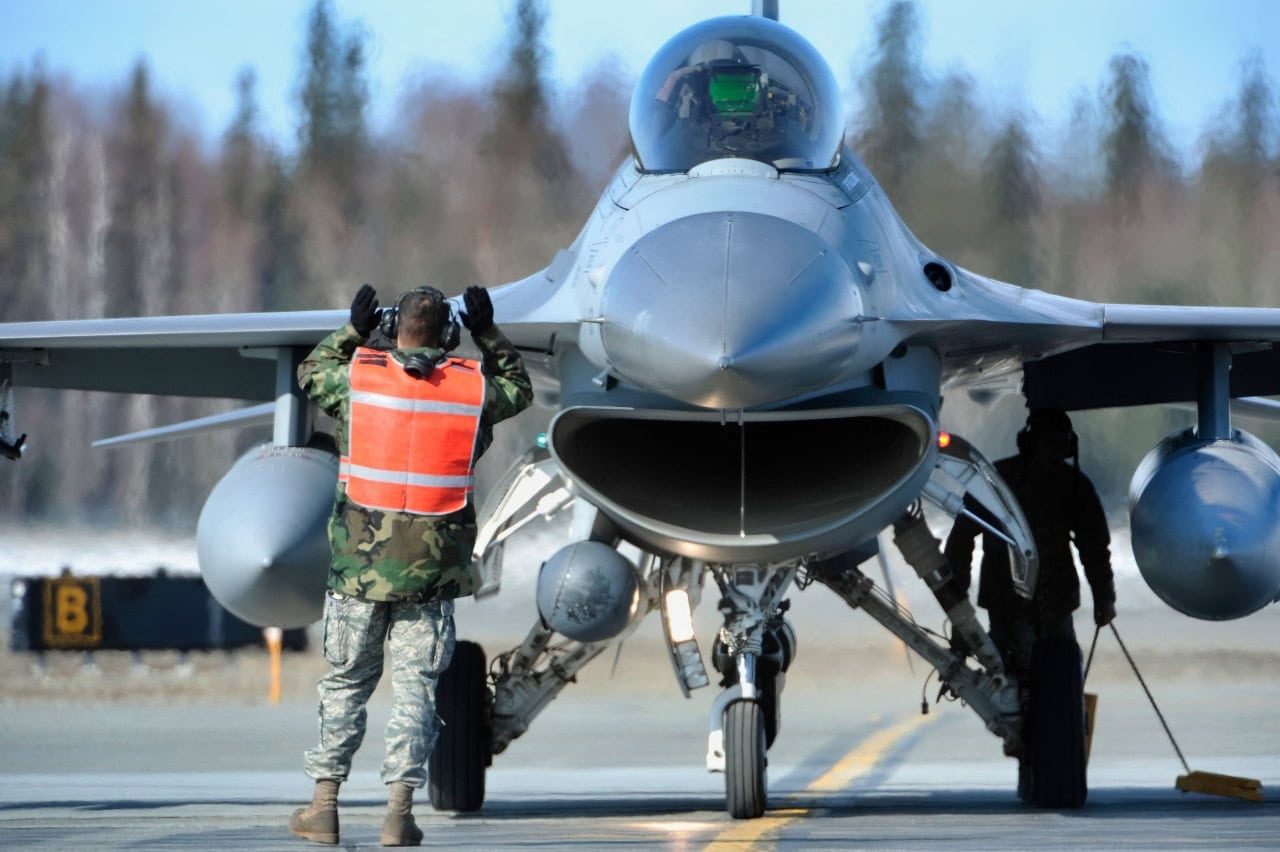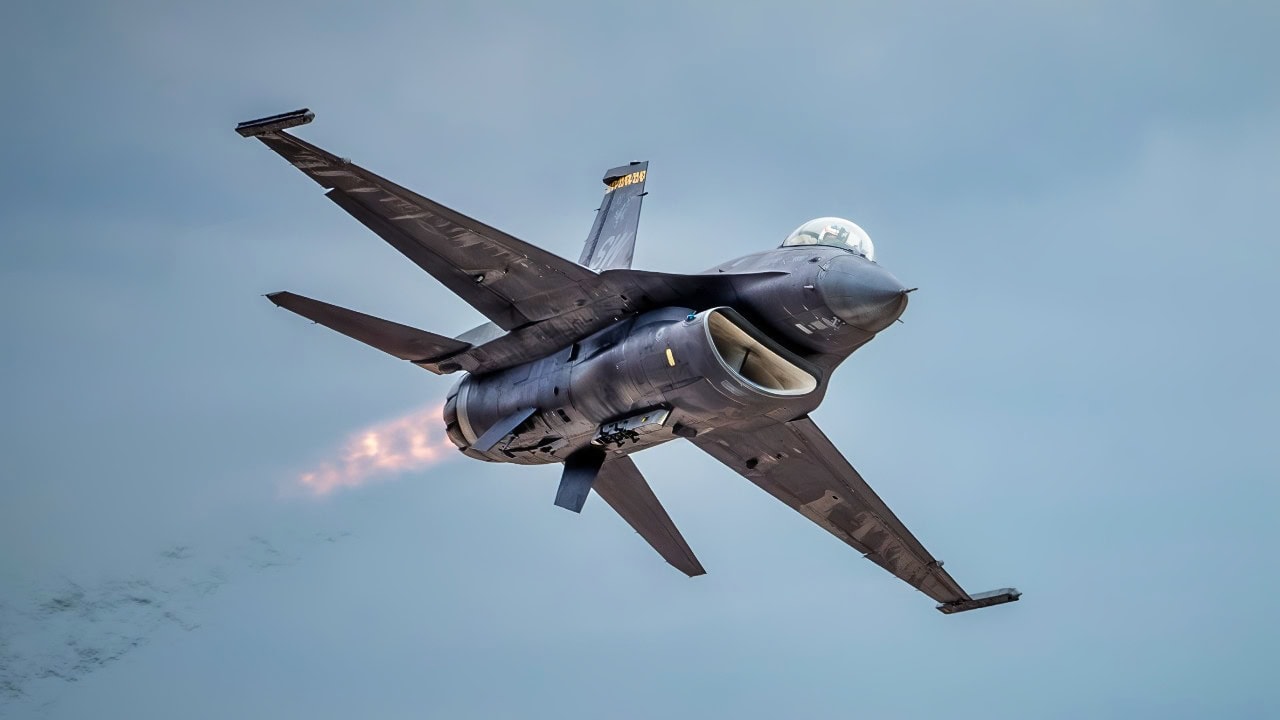Summary and Key Points: Ukraine is effectively utilizing its F-16 fighter jets daily, significantly enhancing its military capabilities, according to General Christopher Cavoli, the commander of U.S. European Command.
-Provided primarily by the Netherlands and Denmark, the jets are successfully intercepting Russian missiles, destroying Iranian-made drones, and conducting strikes inside Russia itself.
-Despite initial logistical challenges and compatibility issues with older F-16 models from other countries, Ukraine now has operational F-16s suited for advanced missions. Additional aircraft and trained pilots are reportedly on the way.
-This marks a significant escalation in Ukraine’s combat abilities, shifting from cautious initial use to aggressive, effective frontline operations.
Cavoli: Ukraine Flying Its F-16s “Every Day”
The Ukrainian Air Force (PSU) is reportedly operating its F-16 fighters every day and using them to target Russian missile-launch sites and storage bunkers.
The aircraft are striking inside Russia itself, the senior U.S. general in charge of European Command HQ (EUCOM) told U.S. lawmakers in official testimony.
“They fly every day; they’ve defeated large number of cruise missile threats, and they’ve delivered an awful lot of offensive attacks as well, specifically bombing attacks in the east,” Army Gen. Christopher G. Cavoli, the dual-hatted commander of Supreme Allied Commander Europe and EUCOM, testified to the Senate Armed Services Committee last week.
Without revealing the exact number of aircraft that have been delivered to the PSU, Cavoli mentioned that the F-16s currently operating in Ukraine are “mainly from northern European countries, the Netherlands and Denmark.”
The U.S. government approved the third-party transfers of used models of the U.S. single-engine fighter to Ukraine in 2023. The approval came a year or more after the PSU had made the request for any used aircraft that could be provided to them.
“There are more F-16s prepared to be deployed there,” Cavoli added. “There are more pilots in the training pipeline.”
F-16s in PSU Service
Last month, the Ukrainian Air Force released an interview with one of its F-16 pilots, whose name was kept concealed for security reasons. The pilot revealed that more than 80 percent of the ordnance launched by these aircraft successfully hit their targets. In the process, the Fighting Falcons have eliminated a significant number of the Iran-made Shahed drones acquired by Moscow, and also of Russian-made cruise missiles, before they could be launched.
The same pilot added that the F-16s are now carrying out offensive counter-air missions that add to the ground-attack operations taking place “each day” over occupied territories in Ukraine, as well as inside Russia itself.
That these aircraft are striking inside Russia is a complete sea change from the autumn of 2024. At that time, U.S. Air Forces in Europe commander Gen. James B. Hecker briefed reporters and said that Ukraine was still new to the F-16. As such, Kyiv was employing its new fighters in a judicious manner and not dispatching them for the most dangerous missions, according to Hecker.
Initial Problems Supplying Aircraft
There were several issues with transferring these aircraft to Kyiv. One of the initial difficulties was the search for any spare F-16s that were available, not already in use, and in a configuration that the Ukrainians could use properly.
“There are no spare, not-in-use aircraft in the U.S. right now,” said one U.S. industry official in late 2022. “So, the only way to get any F-16s to the Ukrainians is to take them away from some USAF facility or Air Guard unit.”
There were older, spare aircraft available from other countries, but there were unique compatibility problems with these models. Some F-16s, for example, were provided in the 1980s to Egypt, but those aircraft had been purchased from the U.S. without the two nations signing a Communication Interoperability and Security Memorandum of Agreement (CISMOA).
The lack of a CISMOA prevented Egypt from operating any advanced U.S. communications, navigation, or weapons systems. These F-16 aircraft were described as “commercial and low-grade.” The missiles they fired were not GPS-guided but laser-guided, significantly reducing their combat capabilities. One former U.S. official who had participated in the Egypt program called them a “near-civilian version” of the F-16.

F-16 Fighter. Image Credit: Creative Commons.
On the other side of the Sinai, the Israeli Air Force also had aircraft that were being retired. But those F-16s are another specialized, Israel-only version with a non-standard General Avionics Computer acting as the nerve center of the aircraft. This is not compatible with the standard U.S. Air Force aircraft that use a different Main Mission Computer.
The Netherlands and Denmark began providing aircraft to Ukraine last summer, and between the two, Kyiv should end up with dozens of F-16s that have none of these compatibility issues. The two nations plan to deliver a total of dozens of F-16s.
Belgium had previously committed to send 30 jets to Ukraine, but according to Prime Minister Bart De Wever, who spoke on the matter in March, these aircraft will be delayed until next year.
About the Author: Reuben F. Johnson
Reuben F. Johnson is a survivor of the February 2022 Russian invasion of Ukraine and is an Expert on Foreign Military Affairs with the Fundacja im. Kazimierza Pułaskiego in Warsaw. He has been a consultant to the Pentagon, several NATO governments and the Australian government in the fields of defense technology and weapon systems design. Over the past 30 years he has resided in and reported from Russia, Ukraine, Poland, Brazil, the People’s Republic of China and Australia.

